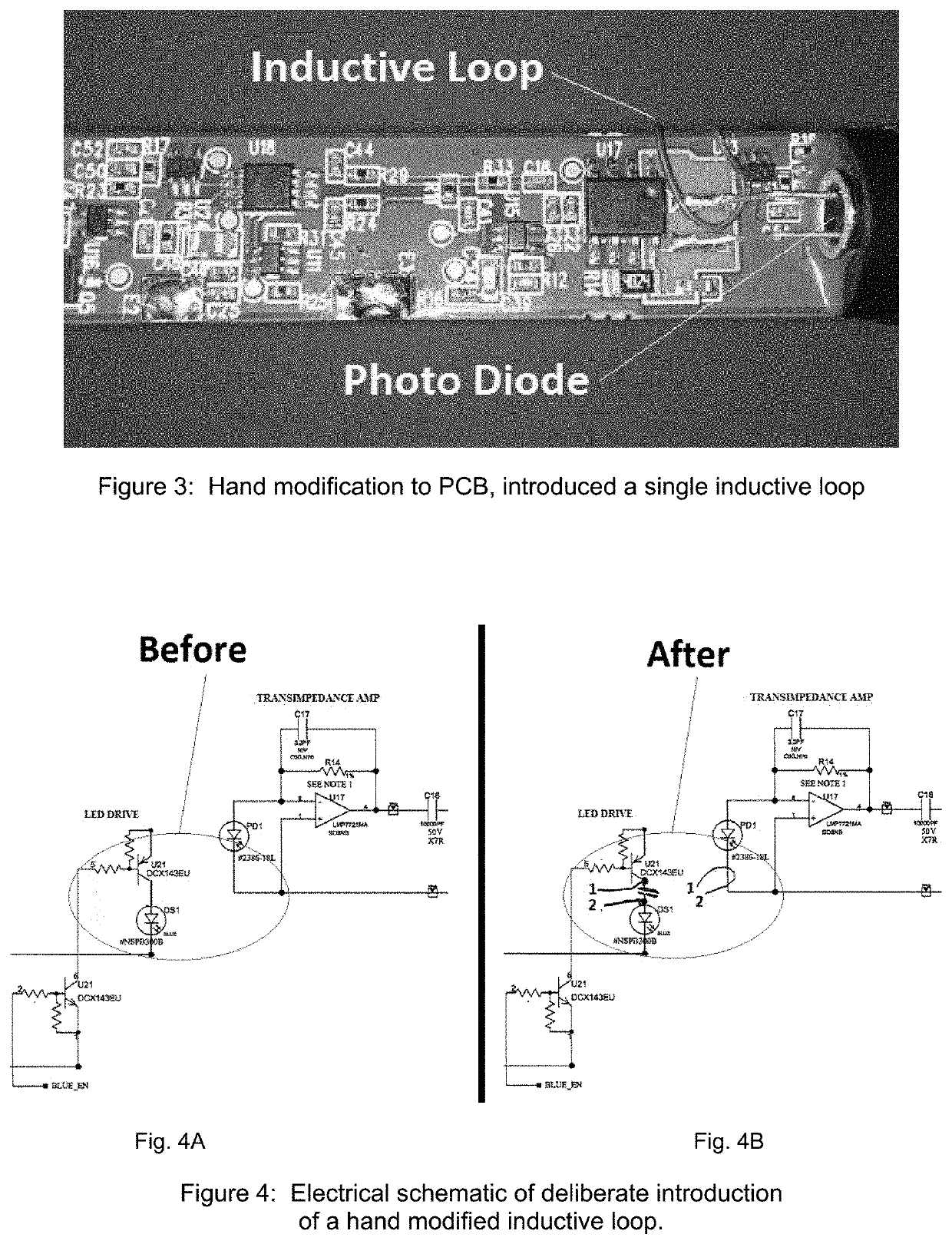Induced crosstalk circuit for improved sensor linearity
a crosstalk circuit and linearity technology, applied in the field of optical sensors, can solve the problems of high degree of variability regarding the magnitude and induced phase shift, inevitability of crosstalk, and negligible susceptibility
- Summary
- Abstract
- Description
- Claims
- Application Information
AI Technical Summary
Benefits of technology
Problems solved by technology
Method used
Image
Examples
Embodiment Construction
Summary of the Basic Invention
[0061]In summary, the present invention alleviates the vulnerabilities presented in the corrective signal processing algorithm by deliberately inducing a moderate inductive crosstalk with optimal phase shift at a specific location on the PCB. For example, if the crosstalk signal is sufficiently large (but not too large) in magnitude (approximately 2-5% of available analog-to-digital converter range), then the respective signal phase will be well-resolved and provide a stable input into the corrective signal processing. The question becomes: Where is the ideal location for deliberately induced crosstalk? By way of example, and according to some embodiments, the present invention provides the photodiode as an ideal location for deliberately induced crosstalk, since it is the most critical component in the receive side of the circuit (receive side—meaning any and all circuitry dedicated to receiving and propagating the electro-optical signal). The photodio...
PUM
 Login to View More
Login to View More Abstract
Description
Claims
Application Information
 Login to View More
Login to View More - R&D
- Intellectual Property
- Life Sciences
- Materials
- Tech Scout
- Unparalleled Data Quality
- Higher Quality Content
- 60% Fewer Hallucinations
Browse by: Latest US Patents, China's latest patents, Technical Efficacy Thesaurus, Application Domain, Technology Topic, Popular Technical Reports.
© 2025 PatSnap. All rights reserved.Legal|Privacy policy|Modern Slavery Act Transparency Statement|Sitemap|About US| Contact US: help@patsnap.com



